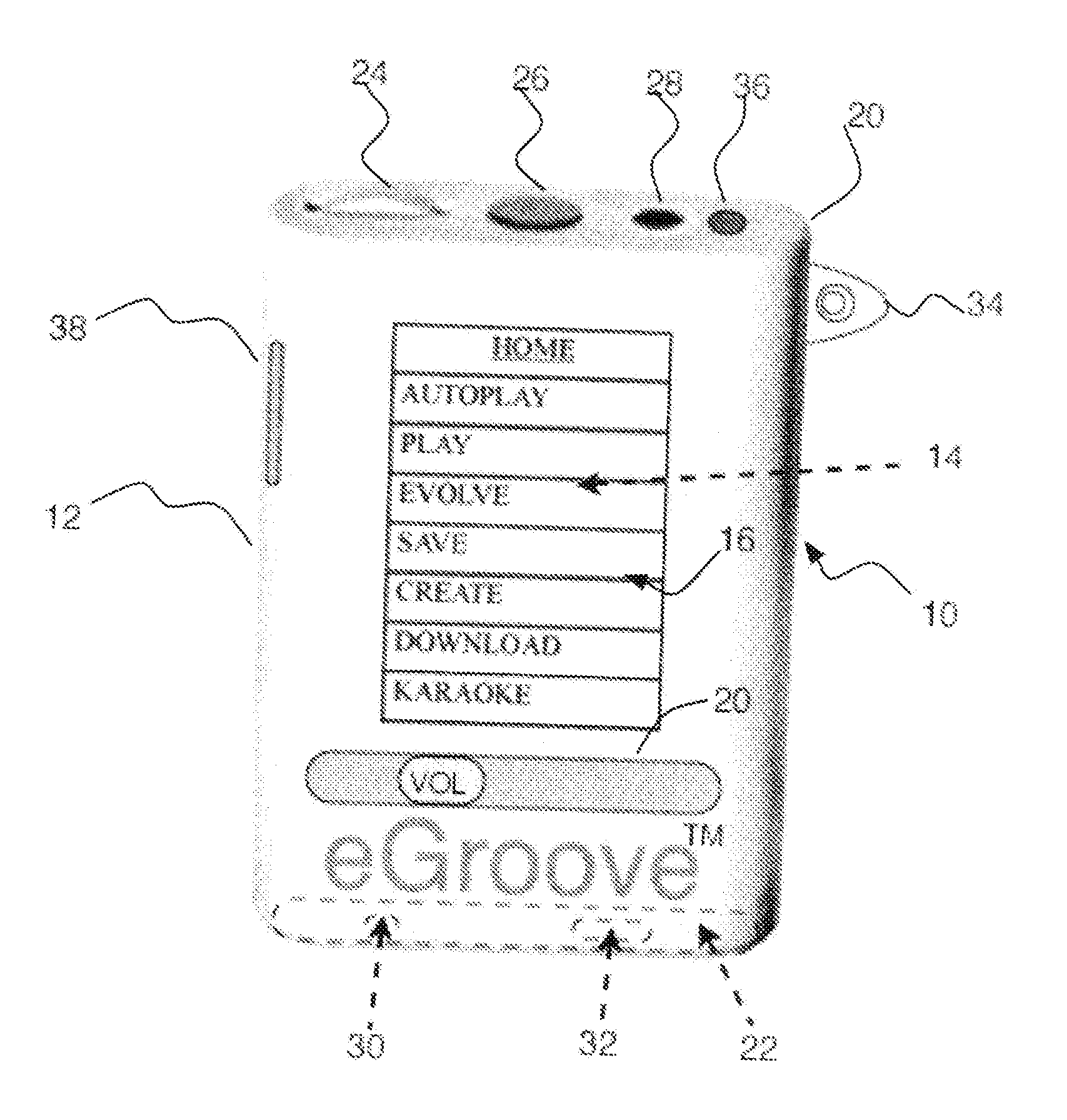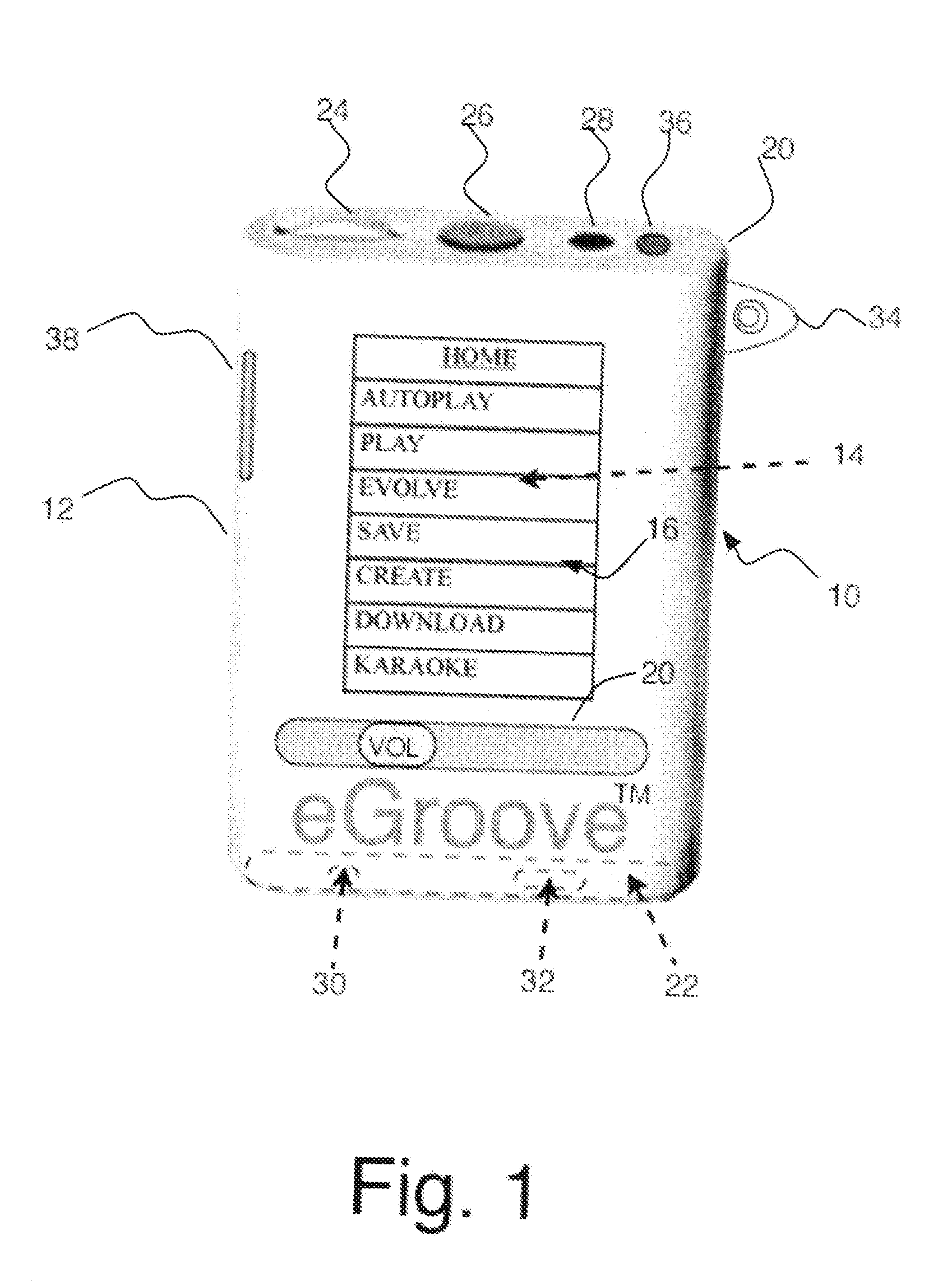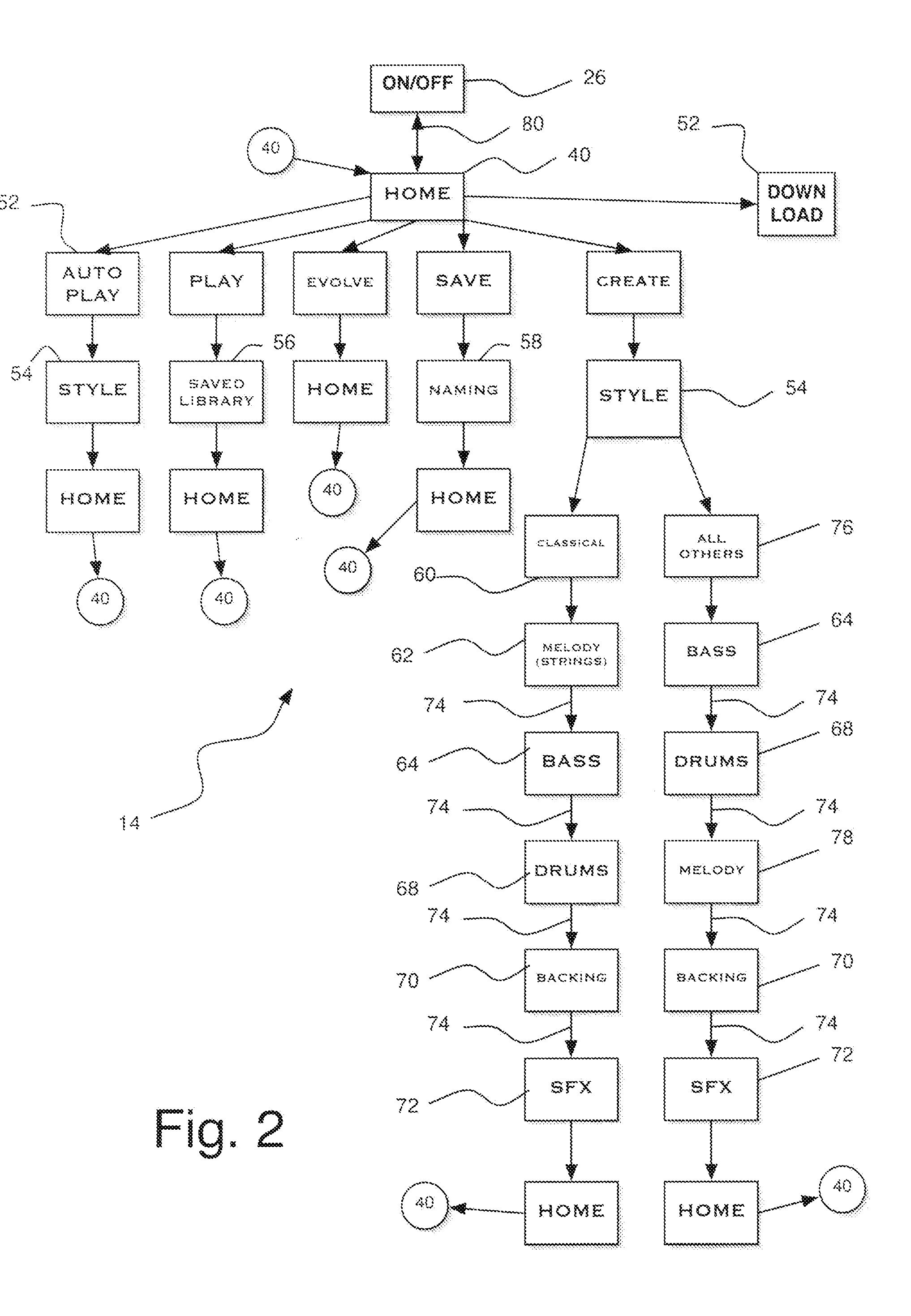Digital Music Composition Device, Composition Software and Method of Use
a digital music and software technology, applied in the field of portable, personal electronic devices, can solve the problems of not having the capability to compose or permit the composition of digital music, the complexity of most of these devices or programs is quite high, and the complexity of other devices is not high
- Summary
- Abstract
- Description
- Claims
- Application Information
AI Technical Summary
Benefits of technology
Problems solved by technology
Method used
Image
Examples
example 1
PGG Use in Music Therapy
[0075] Music Therapy is today a recognized and accredited medical specialty throughout the world. In the U.S. alone, the American Music Therapy Association (the largest professional association) represents over 5,000 music therapists. A visit to the Association's website at http: / / www.musictherapy.org / will document the scope and degree of acceptance of the discipline. It states: “Music Therapy is an established healthcare profession that uses music to address physical, emotional, cognitive, and social needs of individuals of all ages. Music therapy improves the quality of life for persons who are well and meets the needs of children and adults with disabilities or illnesses. Music therapy interventions can be designed to: [0076] promote wellness [0077] manage stress [0078] alleviate pain [0079] express feelings [0080] enhance memory [0081] improve communication [0082] promote physical rehabilitation.”
[0083] The AMTA identifies patient groups who benefit fro...
example 2
PGG Use in Music Education
[0106] Traditional music education today is under severe staffing and budgetary pressure. For example, The Center for Education Policy reports that 22% of school districts have reduced instructional time in music and art to make more time for reading and math. Thus, for music educators operating under severe budgetary restraints, the PGG will offer an inexpensive means of introducing students to the compositional process, a powerful motivator for students formerly apathetic to formal music study, and a valuable tool for networking in and beyond the classroom.
[0107] The professional music educator, whether in a public or private setting, faces two very significant challenges in today's educational environment. [0108] 1. Student motivation. Since music ed. is a valued but declining course of study, the music educator faces an uphill struggle with the majority of primary and secondary students who, while avowedly fond of music (at least “their” music) are ge...
example 3
Internet-Enabled Loop Library & User Groove Distribution Method—Operational Example
[0136] The invention also includes an Internet-enabled method of Loop and Groove distribution comprising provision of at least one web site, called the GrooveSite, or PGG Site, or PijiSite, having a plurality of pages that include functionality for the site visitors, as PGG device Users, to upload Grooves that they have generated for community posting for free sharing by all who access the Site, or to a more restricted group of subscriber members. In addition the Site offers direct, free P2P Groove sharing, and the opportunity for members or subscribers to download new loop (or / and Groove) libraries developed by the Site content provider. The Site optionally includes functionality for offering and operating a wide variety of additional community and information services, such as: news; Blogs by members; ranking of popularity of shared Grooves created by visitor, member or subscriber Users (e.g., base...
PUM
 Login to View More
Login to View More Abstract
Description
Claims
Application Information
 Login to View More
Login to View More - R&D
- Intellectual Property
- Life Sciences
- Materials
- Tech Scout
- Unparalleled Data Quality
- Higher Quality Content
- 60% Fewer Hallucinations
Browse by: Latest US Patents, China's latest patents, Technical Efficacy Thesaurus, Application Domain, Technology Topic, Popular Technical Reports.
© 2025 PatSnap. All rights reserved.Legal|Privacy policy|Modern Slavery Act Transparency Statement|Sitemap|About US| Contact US: help@patsnap.com



